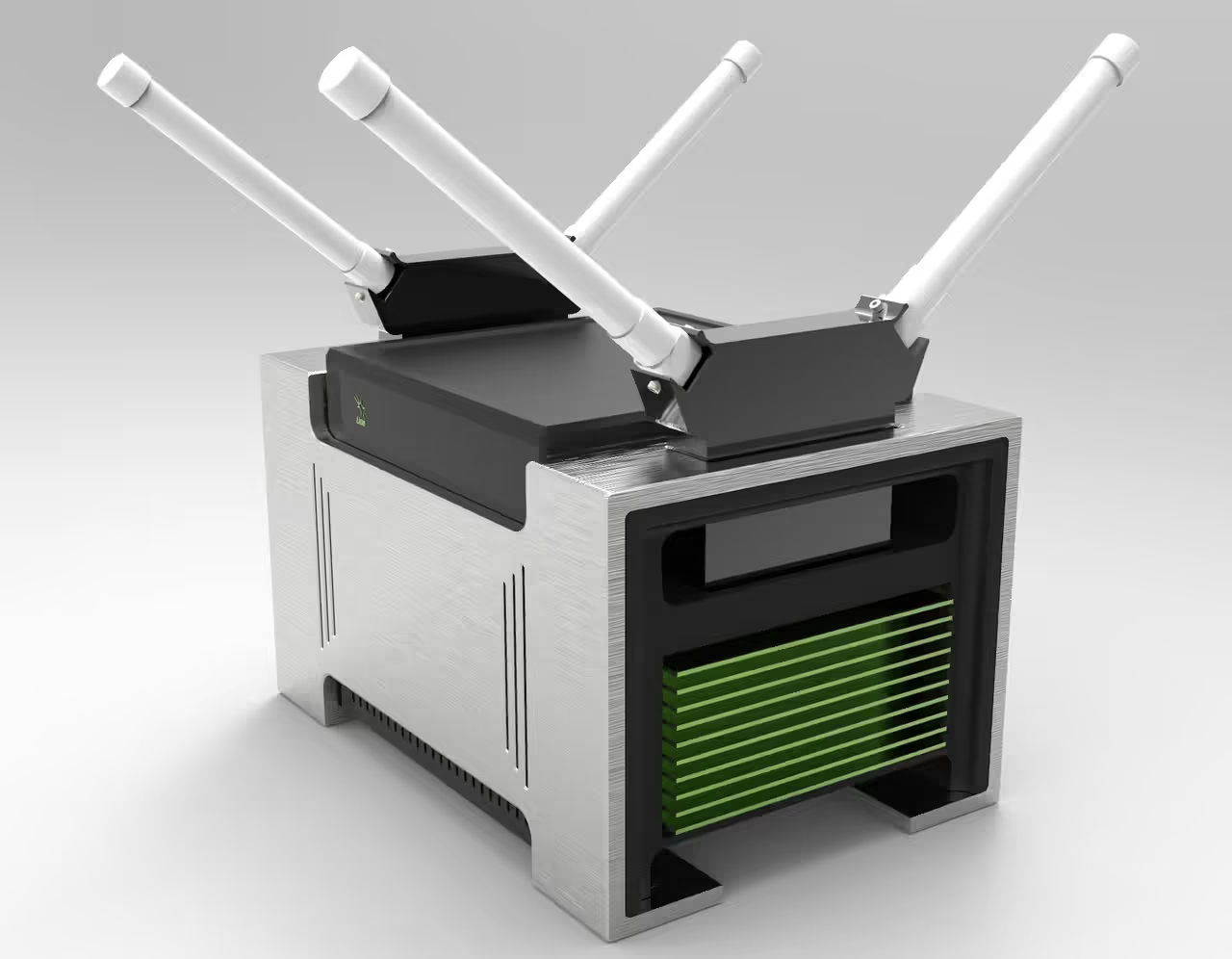
LimeNET crowdfund for software defined radio platforms is open to backers
Lime Microsystems today announced its crowdfunding campaign to take its software defined radio technology mainstream is open to backers from today - running on Crowd Supply.
Lime's campaign builds on the LimeSDR modules, which last year achieved it's goal with over 4,000 pledges. The three new platforms for developers, enterprise networks and carriers uses among the most advanced radio technologies to dramatically cut the cost of wireless innovation, and change the way networks are developed.
The three systems available to backers are:
- LimeNET Mini is a small cell for developers creating and running residential networks including IoT / cellular
- LimeNET Enterprise is a newly developed system that lets you connect up to LimeSDR boards and create highly-complex complex networks across a range of standards and frequencies
- The LimeNET wide area network in a box is among the most advanced radios available to carriers and is ideal for creating high-power / range cellular networks that can be upgraded via over-the-air software updates.
Those backing the LimeNET campaign can also choose to receive the individual LimeNET wide area network's core, amplifier and new LimeNET QPCIe board (upgraded to 4x4 MIMO) separately.
<iframe src="https://player.vimeo.com/video/217941441" width="640" height="360" frameborder="0" allowfullscreen="allowfullscreen"></iframe>
By using open-source configurable hardware not just on the core, but on the RAN too, developers are able to treat any wireless standard, be it 4G, 5G, LoRa, Sigfox or Bluetooth as an app. With systems updatable through software patches as and when new functionality is required and there is a large community of developers involved in creating apps for the LimeNET platforms.
Lime CEO Ebrahim Bushehri says: "We want to democratise wireless innovation, enabling this advanced technology to be into the hands of the many, not just the few organisations with huge budgets.
"Thousands supported LimeSDR, ranging from the hobbyist right up to a tier one operator EE, and we hope this can receive the same level of interest from the community and operators alike."
Pricing
Pricing for the LimeNET Mini residential small-cell will begin at $1,899 for early-bird project backers, rising to $2,199 after the initial early bird batch is sold.
Pricing for the LimeNET Enterprise system will begin at $1,899. This early-bird price is available exclusively to Aluminium-cased LimeSDR backers. To new backers, the LimeNET Enterprise (which includes an aluminum-cased LimeSDR) will be available at $2,699.
Pricing for the wide area network in a box will be begin at $17,250 for early-bird backers. This is a fraction of the cost of existing hardware therefore enabling the cost of 4G / 5G roll-outs to be significantly reduced.
Backers can also purchase the carrier-class macrocell's Core, Power Amplifier and LimeSDR QPCIe, which has 4x4 MIMO and double the capacity of the original LimeSDR board, separately for $7,699, $13,199, and $2,599 respectively.
The LimeNET suite of base stations hold the potential to completely transform the way telecom networks and IoT wireless infrastructure run, shifting the emphasis and value away from proprietary hardware to open hardware with app stores on top.
Several free and paid-for apps have already appeared on the open community LimeSDR App Store, as well as Lime's invite-only app store, LimeNET.
Wireless standards and applications
Both systems are software defined radio networks in a box, and use open-source, commodity hardware capable of running between 100 kHz and 3.8 GHz, and able to configure all cellular (2G-4G and proposed 5G) standards, as well as IoT standards like LoRa and SigFox and general networking standards like 802.11ac Wi-Fi and Bluetooth.
The LimeNET Mini is an app enabled, small cell base station that combines the LimeSDR technology with Intel's powerful x86 motherboard. It is ideal for developing residential SDR applications - like IoT, or indeed any application to suit a deployment scenario.
The more-powerful LimeNET version is for carrier-class wide area network deployments - both urban and remote.
Supporters of the LimeSDR campaign included the UK's biggest 4G operator, EE, which is partnering with several universities to deliver innovative systems, such as low-cost 4G rollouts to the remote Highlands and Islands of Scotland. The LimeSDR was also used to demonstrate IoT and cellular applications at Mobile World Congress by organisations including Vodafone and Ubuntu.
Other applications developed by the LimeSDR community have included IoT gateways, aviation transponders, utility meters, media streaming / broadcasting, radio astronomy, radar, drone command and control, and more.
Technical summary
The LimeNET platforms use Lime's LMS7002M field programmable RF transceiver to provide continuous coverage between 100 kHz and 3.8 GHz, with a 120 MHz RF bandwidth.
The transceiver contains two transmit and two receive chains to enable 2×2 MIMO. The platforms also run a sixth-generation Intel i7 core, with the carrier-class equipment running the latest 10-core version.
The LimeNET Mini small cell base station comes with 32 GB of DDR4 2133 MHz memory and 512 GB SSD storage. The LimeNET carrier-class base station comes with 64 GB of memory, with 1 TB of SSD storage.
Its list of standards includes, but is not limited to cellular standards, including all regional variants of 2G, 3G and 4G - and those being planned for 5G; IoT protocols, including LoRa, Sigfox, NB-IoT, LTE-M, Weightless; general networking standards such as Wi-Fi, Bluetooth, Zigbee, RFID and digital broadcasting.
For further information on the crowdfunding campaign visit the Crowd Supply page.
About Lime Microsystems
Lime Microsystems is the world's leading designer and manufacturer of field programmable RF transceivers.
The company's software configurable chips can run any mobile standard and any mobile frequency and have been used in a vast array of systems including mobile base stations and small cells, SDR platforms, indoor navigation and machine-to-machine communication systems.
Further information is available at www.limemicro.com.